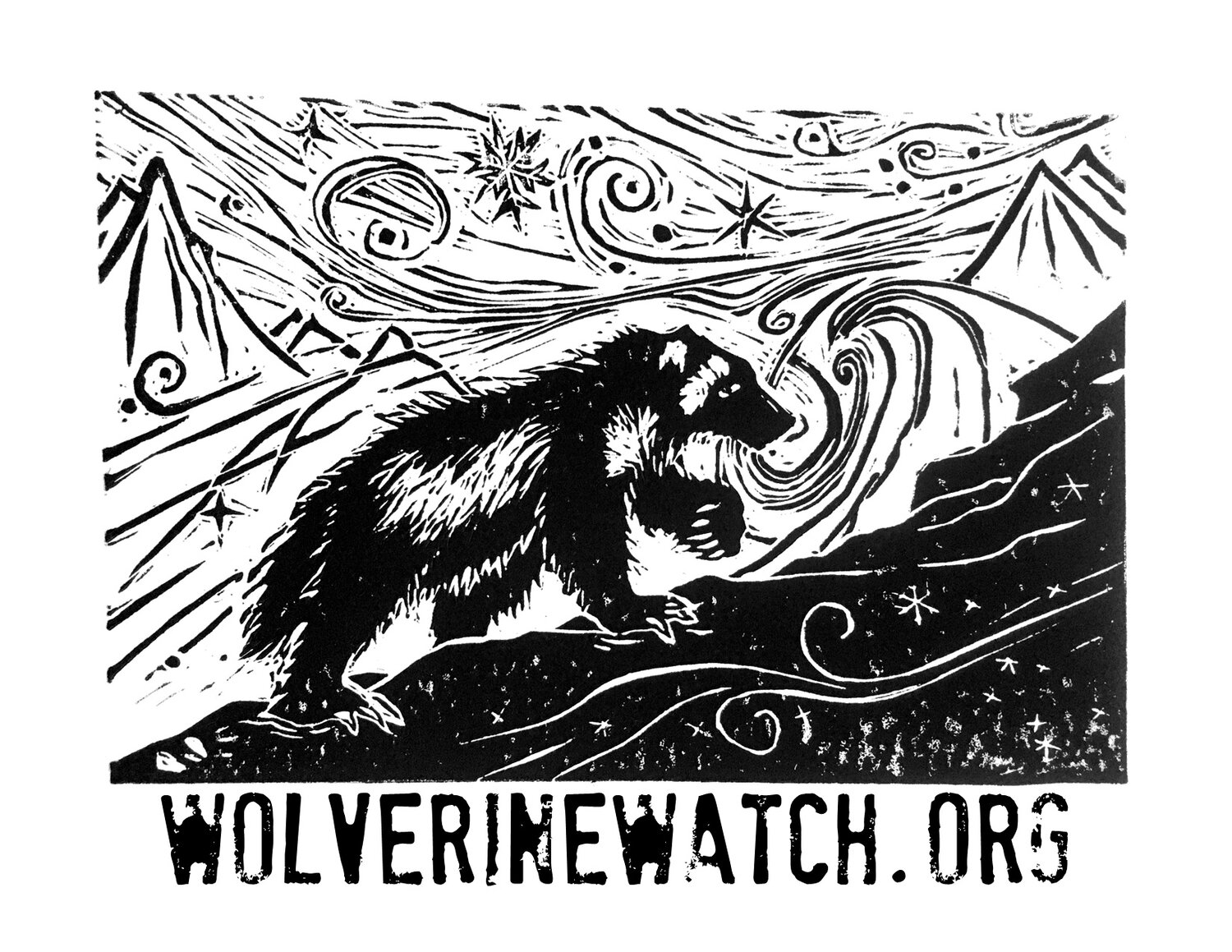WOLVERINE GENE FLOW AND METAPOPULATION STRUCTURE ACROSS WESTERN CANADA AND CONTIGUOUS UNITED STATES
Study Description.
Background: Wolverines are elusive, wide-ranging, snow-adapted mammals that occur at low densities so they are vulnerable to the effects of fragmentation and other environmental changes, especially at the southern extent of their range where abundance, distribution, and genetic diversity are limited.
In 2018, we initiated a large-scale collaborative meta-analysis to examine wolverine gene flow and population structure across western Canada and the contiguous United States following completion of an assessment of population density and genetic structure in Banff, Yoho, and Kootenay National Parks. In fall 2019, we convened a workshop in Missoula, MT with researchers from the US to develop a transboundary framework for this analysis. In summer 2020, the process of obtaining data-sharing agreements and standardizing microsatellite and haplotype data across Canada and US genetics laboratories was completed.
The final aggregate dataset contains >800 wolverine genotypes that were contributed by a collaborative group of >30 wildlife researchers and managers from across Alberta, British Columbia, Idaho, Montana, Washington, and Wyoming.
Objectives:
Characterize wolverine population structure and quantify sex-specific migration rates to inform management and establish a baseline for genetic monitoring.
Identify landscape connectivity barriers and linkages among existing wolverine habitat, such that conservation, restoration, or mitigation measures (e.g., corridor protection, highway crossing structures) for those areas can be prescribed and prioritized.
Evaluate whether and where predicted environmental changes are likely to affect future wolverine movements such that proactive conservation solutions may be implemented.
Future Direction and Timeline: We will use a combination of nuclear DNA and mtDNA analysis methods to examine gene flow and population structure in western Canada and the contiguous US. We will use Principle Coordinates Analysis (PCA) and population assignment tests to characterize genetic structure and quantify inter-population migration rates. We will then use landscape resistance models and model selection to identify the significant spatial variables and movement barriers that affect gene flow on this landscape. Genetic connectivity analyses are currently underway and scheduled to be completed in spring 2021. We will convene a second transboundary workshop in spring 2021 to discuss the interpretation of results and their management implications before finalizing project reports and publications. These results will be used to identify important locations for conservation actions and will help to inform cooperative transboundary management of the western wolverine metapopulation.
Who.
Principal Investigators: Michael Sawaya, Anthony Clevenger, Erin Landguth, Robert Long
Collaborators: Robert Anderson, Keith Aubry, Nicole Bjornlie, Jeff Copeland, Casey Day, Jason Fisher, Justin Gude, Doris Hausleitner, Kim Heinemeyer, Bob Inman, Scott Jackson, Andrea Kortello, Deb Lacroix, Lisa Larson, Jeff Lewis, Dave Lockman, Michael Lucid, Cory Mosby, Garth Mowat, Cliff Nietvelt, David Paetkau, Kristy Pilgrim, Cathy Raley, Mike Schwartz, Matt Scrafford, John Squires, Scott Tomson, Zack Walker, John Waller, Rich Weir
Location. Western Canada, Contiguous US (BC, AB, WA, MT, ID, WY)
Duration. 2018 to 2021
Funding.
Columbia Basin Trust
BC Fish and Wildlife Compensation Program
BC Ministry of Forests, Lands, and Natural Resource Operations and Rural Development
Western Transportation Institute-MSU
Woodcock Foundation
Wilburforce Foundation
Liz Claiborne Art Ortenberg Foundation
US Fish and Wildlife Service
Western Association of Fish and Wildlife Agencies
National Geographic Society
Disney Wildlife Conservation Fund
Volgenau Foundation
Cross Foundatation
US Fish and Wildlife Service Great Northern Landscape Conservation Cooperative
Alberta Conservation Association
Norcross Foundation
Bow Valley Naturalists
Alpine Club of Canada
Alberta Environment and Parks
Wildsight
Yellowstone to Yukon Conservation Initiative

